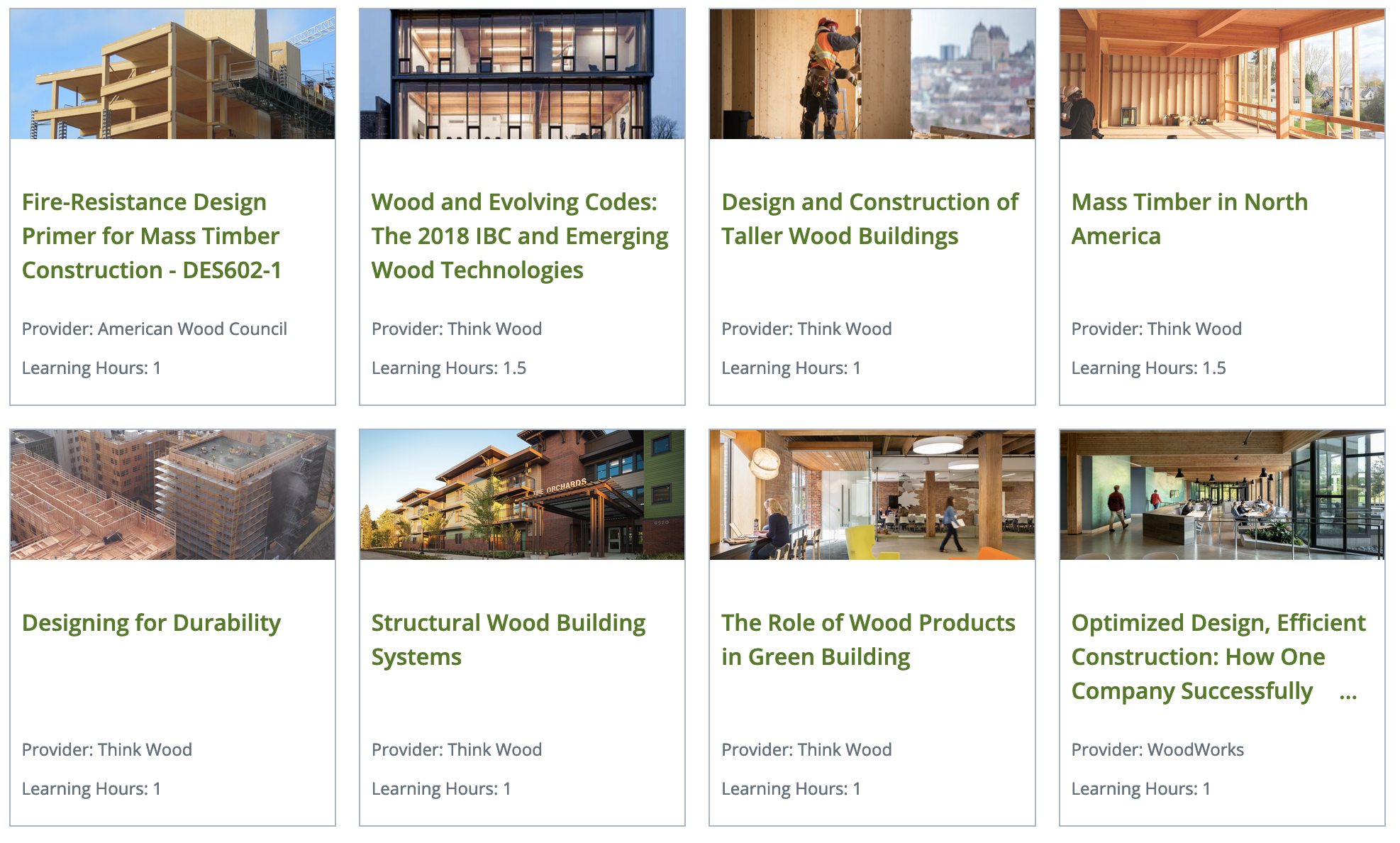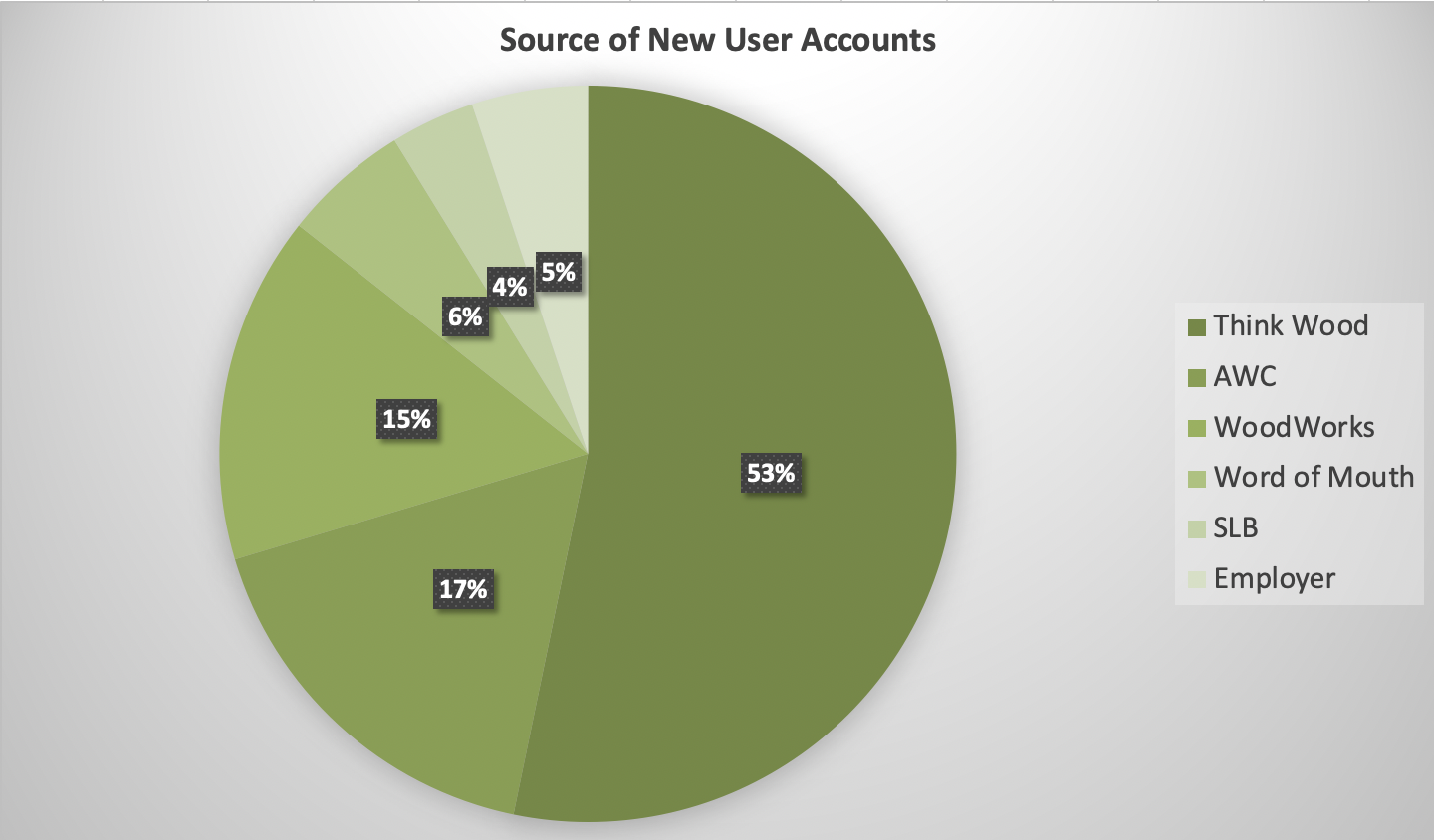HIGHLIGHTS
PROGRAM UPDATES
AWC’s Support Key to Tall Wood Updates in NFPA Standards Tall Mass Timber Toolkit Available for Fire Officials Think Wood Provides Carbon Footprint Education for Architects Think Wood Brand Refresh Brings Modern Look to Wood WoodWorks Meets AEC Demand for Education, ConvenienceINDUSTRY NEWS
New CLT Plant Planned in Montana Resolute Earns Major Recognition and Awards, including Executive of the Year Developer Pursues Mass Timber Overbuild in Vancouver Arup Principal Discusses Mass Timber Curtainwall Systems, Code Compliance Retail Sector Adapts, Innovates, Waits for Vaccine Five-Story CLT Catalyst Building Completed in SpokaneINSIGHTS ON THE COMPETITION
Concrete’s Efforts to Go Green Gain TractionINDUSTRY RESOUCES
Virginia Tech’s Monthly Housing ReportProgram Updates
AWC’s Support Key to Tall Wood Updates in NFPA Standards
The AWC gained recognition for tall mass timber buildings in the National Fire Protection Association’s (NFPA’s) 5000: Building, Construction and Safety Codes and NFPA 101, Life Safety Code. The changes are compatible with and complement height and area limits approved for the 2021 International Building Code (IBC), but also allow for NFPA exceptions to support exposed mass timber elements and more stories, in some cases up to 21. The provisions were ratified during the June 2020 NFPA virtual membership meeting and approved by the NFPA Standards Council. These updated standards are the latest enabled by the AWC’s support and expertise, and they will further expand the market opportunity for tall mass timber buildings.
Tall Mass Timber Toolkit Available for Fire Officials
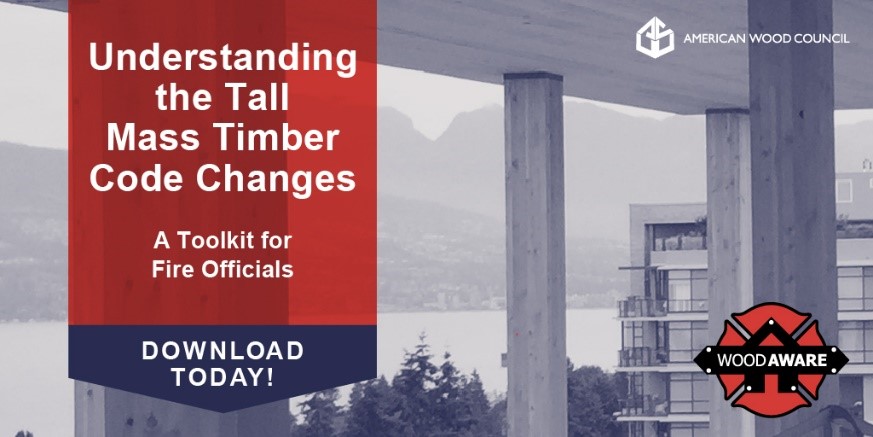
The AWC recently published a new toolkit for fire services, “Understanding the Tall Mass Timber Code Changes,” based on its WoodAware website. The toolkit provides a comprehensive understanding of the 2021 IBC code changes and details the International Code Council’s rationale and rigorous process, including the engagement of building-code and fire-service officials, which led to the approval of tall mass timber buildings up to 18 stories.
Think Wood Provides Carbon Footprint Education for Architects
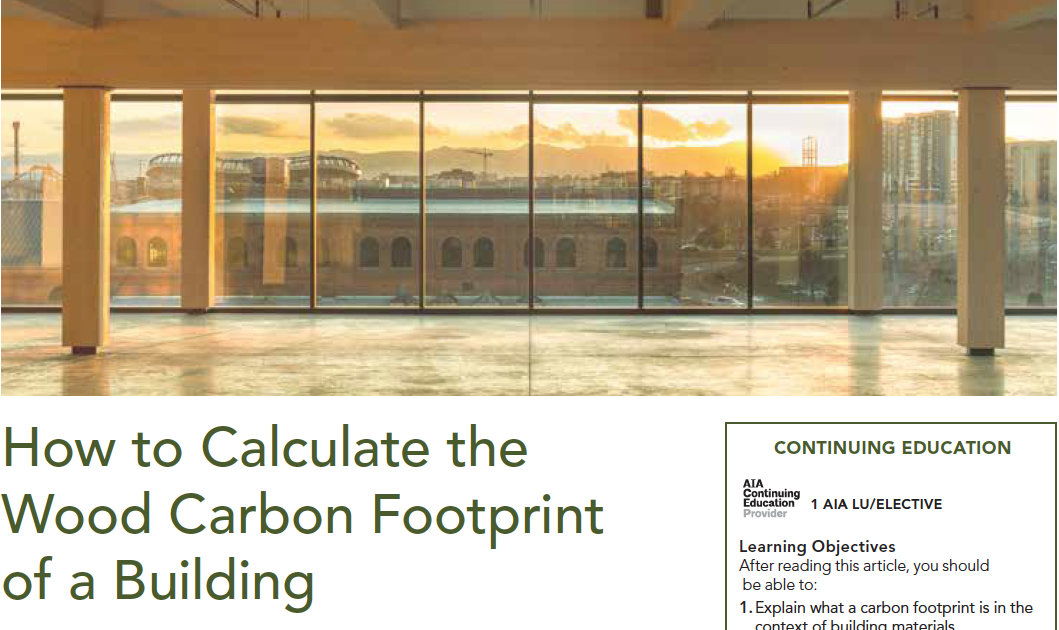
As decarbonization strategies for the built environment shift from energy efficiency to embodied carbon, Think Wood is responding to ensure that specifiers understand lumber’s benefits. Think Wood recently developed a new CEU, “How to Calculate the Wood Carbon Footprint of a Building,” which is available on the Wood Institute website; will be featured in the September issue of Architectural Record; and will be summarized in an article for the October issue of Construction Specifier.
Think Wood’s carbon education and messaging are key interventions as competing materials begin to capitalize on sustainability messaging, including building life-cycle assessments, embodied carbon, and environmental product declarations (EPDs), as demonstrated in educational offerings from concrete’s Build With Strength campaign.
Think Wood Brand Refresh Brings Modern Look to Wood
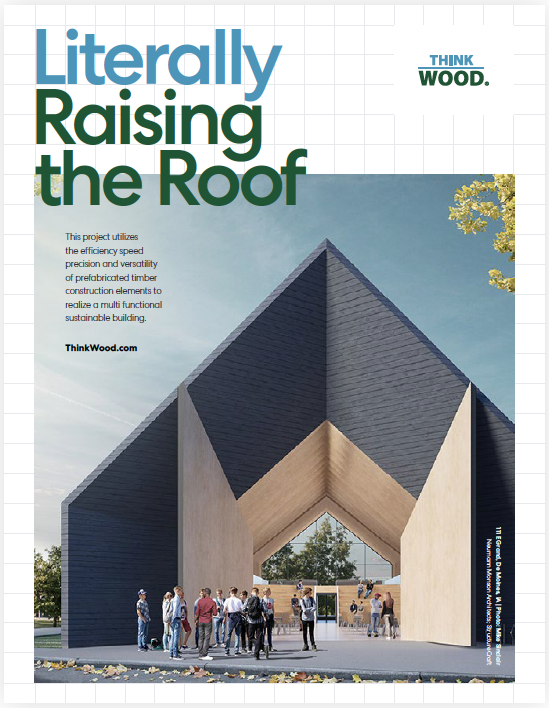

Within the architecture and developer community, aesthetics are key to project differentiation and marketability. With this in mind, Think Wood recently updated its brand to create a unified, streamlined look and feel across its marketing platforms to make its messaging more memorable, increase traffic and engagement, and ultimately generate more leads.
The brand update involved a data-driven design process, based on market research from architects, developers, and residential contractors. Key insights included: 62% found color palettes with blue more compelling; 52% saw blue/green as best conveying sustainability; and 47% considered wood “modern and forward-thinking” after seeing the designs versus 29% at the start of the survey.
The brand refresh launched across all of Think Wood’s channels, including its updated website, in early September.
WoodWorks Meets AEC Demand for Education, Convenience

WoodWorks’ ability to quickly adjust to changing market dynamics is helping it stay on track to meet its education goals for 2020. WoodWorks recently hosted two virtual workshops focused on effectively bidding for and managing mass timber projects, which together reached nearly 450 developers and architecture, engineering, and construction (AEC) professionals from across the United States. Understanding how mass timber differs from other building systems is key to cost-effectiveness, and in the absence of this knowledge, unreasonably high bids can result.
As moderators, WoodWorks staff engaged the audience and facilitated discussion during each session and organized well-attended regional “office hours” after each session to maximize engagement and networking. Partner exhibit halls also continue to grow in popularity, with concurrent halls garnering 2,700 views and resulting in 265 contact forms being submitted.
Industry News
New CLT Plant Planned in Montana
F.H. Stoltze Land and Lumber, builder Pat Clark, and other investors have announced the creation of Stoltze Timber, a new joint venture mass timber production facility based in Columbia Falls, Montana. The company will specialize in large-format, cross laminated timber (CLT) panels using small trees. Using small trees will result in a smaller lam that will then be glued together to create high-strength wood panels suitable for homebuilding and other construction projects.
In addition to providing a high-demand, high-value construction product, the venture is also keen to make a meaningful contribution to forest management by utilizing the overabundance of lower-value, small-diameter timber currently found in Montana’s forests.
F.H. Stoltze General Manager Chuck Roady, a former SLB Board of Directors member, is part of this venture.
Read more about the facility here.
Resolute Earns Major Recognition and Awards, including Executive of the Year
On September 10, the 2020 International Business Awards (IBA) awarded Yves Laflamme, president and chief executive officer of Resolute Forest Products, a silver Stevie® award in the Executive of the Year – Manufacturing category. Laflamme’s contributions to sustainability played a key role in his selection.
Resolute also earned bronze Stevies in the Achievement in Human Resources and Human Resources Department of the Year categories for its employee relations and recruitment programs.
Recognition was also given to Resolute in area for Great Employers in three categories: a silver Stevie in the Recruiting or Talent Acquisition category for the Resolute Human Resources department, and two bronze awards.
Learn more about the Stevie Awards and all 2020 winners here.
Developer Pursues Mass Timber Overbuild in Vancouver
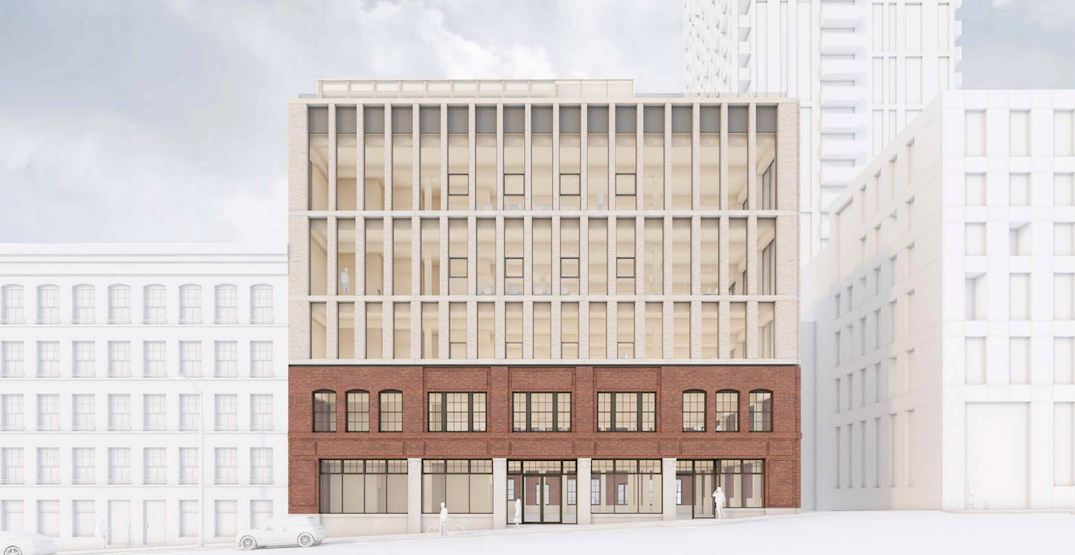
Reliance Properties, in partnership with Mcfarlane Biggar Architects & Designers, has proposed a three-story mass timber addition to an existing two-story, 1911-built warehouse near BC Place Stadium in Vancouver. The proposal includes mass timber beams and columns and laminated timber floors in a re-envisioned commercial and office space.
Read more about the project and view renderings here.
Arup Principal Discusses Mass Timber Curtainwall Systems, Code Compliance
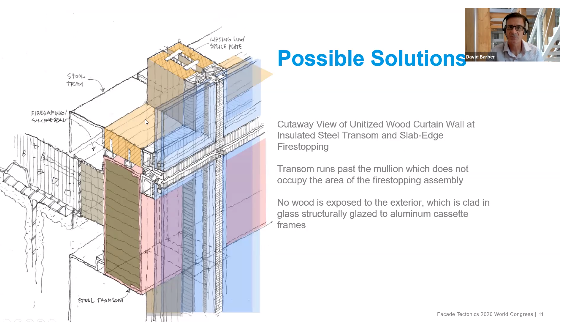
The Facade Tectonics Institute’s (FTI’s) 2020 World Congress occurred virtually in August and featured a presentation from David Barber, principal for Arup, who explored the fire safety and code challenges for mass timber curtainwall systems. Speaking on behalf of his co-authors, HOK senior associate John Neary and FTI ambassador of innovation and collaboration Mic Patterson, Barber asserted that timber is a viable, more sustainable alternative to aluminum in curtainwall framing applications.
Although the 2021 IBC offers many exciting new opportunities for wood, it does not consider the use of timber on the exterior of a building. According to Barber, “The path for code compliance is difficult and fraught with potential misinterpretations and misunderstandings . . . partly due to the fact that we lack a lot of definitions around curtainwall and window wall systems.” As window frames are not part of the primary or secondary building structure, they do not require a fire-resistance rating; however, one part of the code says that they need to be completely noncombustible while other parts allow for exceptions, creating a significant gray area.
Barber and his colleagues are working to develop a system that will ensure code compliance. Read more about Barber’s presentation here.
Retail Sector Adapts, Innovates, Waits for Vaccine
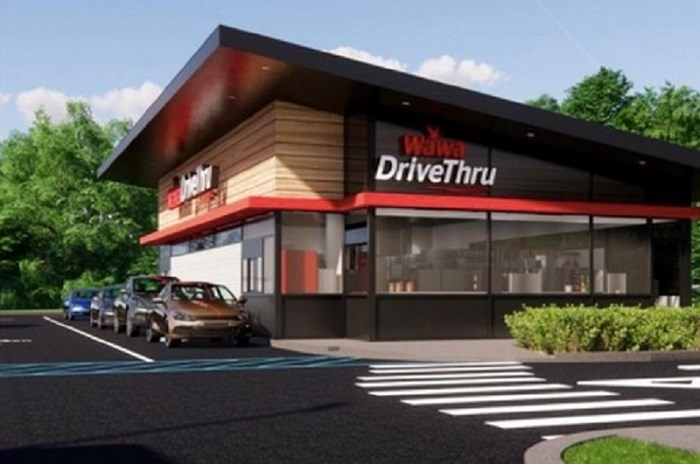
The retail sector has been among the most damaged by the coronavirus pandemic. As analysts contemplate the future of the sector and the role of brick-and-mortar stores, many expect that a key to survival will be balancing the desire for in-store experiences with the ability to guarantee tenants’ and patrons’ health, well-being, and safety.
Many retailers have been working to adopt any combination of drive-through and curbside services, pop-up stores, at-home services, and/or integrating data and technology to offer better shopping experiences. These adjustments are prompting them to reassess their physical footprint. Overall, while retail analysts expect that e-commerce will continue to play a key role in consumer spending, many also believe that the advent of a vaccine will enable a turnaround for the sector as consumers continue to crave in-person shopping.
Read more here.
Five-Story CLT Catalyst Building Completed in Spokane
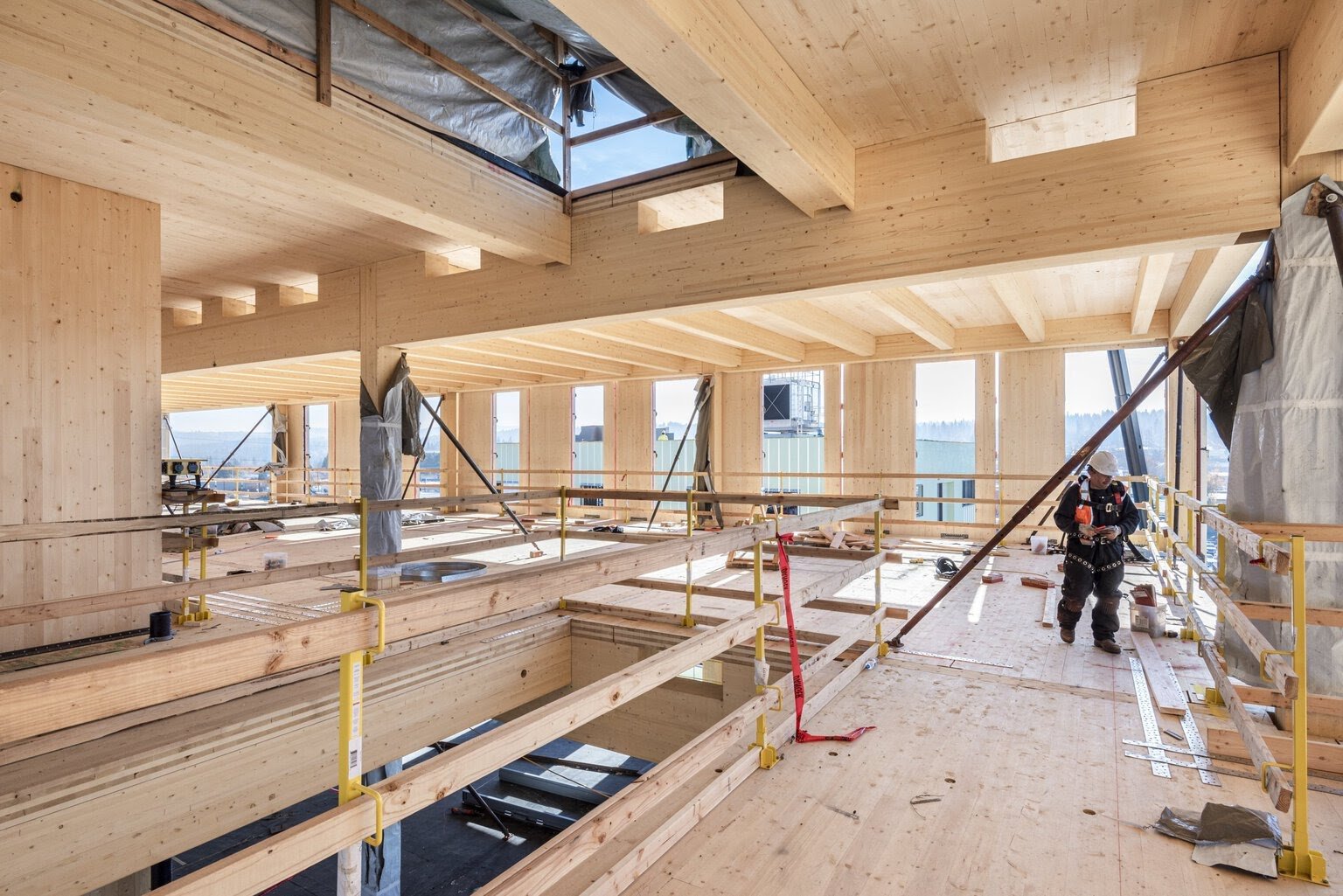
Construction is now complete of the five-story, 150,000-square-foot Catalyst Building in Spokane, Washington. The net-zero building was constructed of CLT and will be occupied primarily by Eastern Washington University. Built by construction start-up Katerra, it is one of several mass timber buildings expected to come online in Washington state in the coming years. Woodworks reports 45 completed mass timber projects in Washington, including this project which they provide project support, and another 46 buildings are in the planning/design phase.
Consumers, policymakers, and builders are drawn to mass timber based on its sustainability and cost appeals. According to the Seattle Times, “Environmentalists have said green materials like CLT are crucial to slowing the progress of climate change. Because it can be used in prefabricated developments, builders say CLT could play a role in getting offices and apartments up more quickly and cheaply.”
Read more here.
Insights on the Competition
Concrete’s Efforts to Go Green Gain Traction

The New York Times recently spotlighted investments by some concrete companies to innovate greener, more environmentally responsible products in an effort to reduce concrete’s carbon pollution load. Concrete is responsible for approximately 8% of global carbon emissions – if it were a country, its emissions would trail only the United States and China. Pressure is growing for the industry to create cleaner products, including from architects and developers who are keen to achieve lower embodied carbon footprints in their projects.
Companies such as Central Concrete, part of U.S. Concrete, are among those investing in low-emissions concrete, which represents 70% of their production, up from only 20% just over a decade ago. A company spokesperson stressed their effort to keep pricing on par with conventional concrete, believing that the product’s sustainability benefits will then become a key differentiator in the market.
Read The New York Times piece here.
Industry Resources
Virginia Tech’s Monthly Housing Report
This monthly housing commentary report is a free service of Virginia Tech and is intended to help one gauge future business activity in the U.S. housing market.
July 2020 Reports (released in September 2020)
Part A: July Housing Commentary
Part B: July Economic Conditions


